HEAT THERAPY USE IN PHYSIOTHERAPY
Table of Contents
MOIST HEAT THERAPY
DEFINITION
Moist Heat can reduce muscle spasms, reduce joint stiffness, and make soft tissue more flexible. Heat can be used to help loosen tight muscles and joints during a warm-up period before exercise.
Heat is not used the first few days after an injury or while your injury has any swelling because heat increases blood flow and can worsen swelling. Heat is typically used on chronic (older than 4-6 weeks) injuries and pain.
Moist heat is more effective than dry heat because it penetrates more deeply, which increases the effect on muscles, joints, and soft tissue. Moist heat is typically applied using moist hot packs that are stored in a hydroculator at 160 degrees. A moist heat treatment usually lasts for 15 to 20 minutes.
canvas pouch with silica gel
pack is kept in a water- filled heating unit maintained between 160’f- 170’f
packs maintain temparature for 30-45 minutes
packs transfer heat by conduction
main benefit is superficial heat to 1 cm
PHYSIOLOGICAL EFFECTS OF MOIST HEAT
- increase circulation 1.5-2x normal
- increased metabolism ( contraindicated in 2-3 days post injury )
- increase inflammation, phagocytosis, wound healing
- decreased pain ( analgesia ) not as effective as cryotherapy for acute pain
- decreased muscles spasm
- decreased tissue stiffness( fluids less viscous and collagen releases easier )
- depth of effect are not as great as with cold
- vascular changes are confined to skin
- increase sensory nerve conduction
- temperature is carried on A- delta fiber
- analgesic effects both distal and proximal to area treated
INDICATION
- subacute or chronic inflammatory conditions
2. reduction of subacute or chronic pain
3. subacute or chronic muscle spasm
4. decreased ROM
5. hematoma resolution
6. reduction of joint contracture
7. infection
CONTRAINDICATION
- acute conditions
- peripheral vascular disease
- impaired circulation
- poor thermal regulation
PREPARATION OF PATIENT
cover pack waterry cloth or towel covering
place pack on patient in comfortable manner( patient on pack is contraindicated )
check patient within 5 to 6 minutes for comfort
allow 3-4 hr minimum between treatments on the same day
How Moist Heat Can Help Treat Pain
Most people are familiar with using hot and cold treatments for pain
There are two different types of heat therapy: moist and dry.
Both are meant to penetrate below the skin to relieve pain and soreness.
WHAT IS MOIST HEAT?
Moist heat therapy includes a wet heat source used to soothe and relax sore muscles, joints, and ligaments.
This could include hot water bottles, steam towels, hot baths, or moist heating packs.
Hot baths can be especially helpful because the enveloping heat will target both the injured muscles and the ones that may have tensed up to compensate for your injury.
WHAT ARE THE BENEFITS OF MOIST?
In comparison to dry heat (electric heating pads and heat wraps), moist heat can penetrate the skin faster and deeper, getting right to the muscle—the root of your pain.
A study comparing the two types of heat therapy showed a greater pain reduction with moist heat in less time than dry heat. There’s also a reduced chance of skin irritation since the moisture helps to increase tissue elasticity.
Dry heat can provide a more consistent level of heat for a longer period of time. As a result, some see it as more convenient and easier to use.
How is Moist Heat Applied?
1) Any heating pads, whether they have water or gel inside, need a layer in between the source and your body to avoid burning the skin.
2) You may see your physiotherapist using a hydrocollator, which heats pads in a thermostatically controlled water bath.
3) The pads are put in covers before being placed on the injured area. Any source of moist heat should be monitored throughout to ensure the skin does not overheat. You shouldn’t use heat therapy when the injured area is bruised, swollen or the skin is broken or hot to the touch.
PRECAUTION
the infected area must be covered by the gauze
WHAT IS A PARAFFIN WAX BATH?
Paraffin wax is a white or colorless soft, solid wax. It’s made from saturated hydrocarbons it’s colorless, tasteless, and odorless. It can also be used to provide pain relief to sore joints and muscles.
Paraffin wax has many other uses, too. It’s often used as lubrication, electrical insulation, and to make candles and crayons.
Wax and liquid paraffin are mixed in the proportion of 7:1. Paraffin wax bath is a common heat therapy approaches for people with arthritis or other rheumatic diseases. The Paraffin wax bath heat helps enhance blood flow and relax the muscles, which can assist relieve symptoms of arthritis, osteoarthritis, and fibromyalgia.
What are the benefits of paraffin wax?
Paraffin has cosmetic and therapeutic benefits.
1) Cosmetic benefits
Cosmetically, paraffin wax is often applied to the hands and feet. The wax is a natural emollient, helping make skin supple and soft. When applied to the skin, it adds moisture and continues to boost the moisture levels of the skin after the treatment is complete.
It can also help open pores and remove dead skin cells. That may help make the skin look fresher and feel smoother.
2) Therapeutic benefits
Paraffin wax bath may be used to help relieve pain in the hands of people with:
- osteoarthritis
- rheumatoid arthritis
- fibromyalgia
- other joint mobility issues
It acts like a form of heat therapy and can help increase blood flow, relax muscles, and decrease joint stiffness. Paraffin wax can also minimize muscle spasms and inflammation as well as treat sprains.
BENIFITS
A paraffin treatment soothes chronic joint pain and relaxes stiff muscles, and improves blood flow to the treated area, as noted by Therabath, a manufacturer of paraffin treatment products. It increases the range of motion for people with arthritis, bursitis, and other chronic conditions that cause pain and stiffness. Paraffin treatments also smooth and soften dry, chapped, rough, and scaly skin. It can be helpful for chronic skin disorders such as eczema and psoriasis.
How It Works?
Paraffin treatment is a form of deep heat therapy. Liquified paraffin wax is very efficient at absorbing and retaining heat. When you dip your hand or foot, for example, into the paraffin bath, heat transfers from the wax into the affected area as the wax solidifies. The heat increases circulation and relieves pain and stiffness. To aid in skin softening, paraffin increases blood supply to the skin, while also opening pores and trapping moisture from underlying layers of skin.
There are four methods of application of paraffin wax therapy and the treatment is given for about 10 – 20 minutes.
- Dipping method (Direct immersion)
- Wrapping method (bandaging)
- Brushing method
- Pouring method
1 Dipping method (Direct immersion):
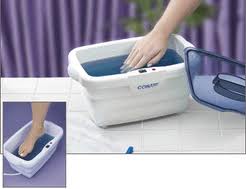
In this method, the body part to be treated is directly immersed into the container of paraffin wax for 2 – 3 seconds and taken out. After 2 – 3 seconds the part is again immersed to make another layer of paraffin wax. This process is repeated 6 – 12 times until 3 – 4 mm layer is formed, and then wrapped around by plastic sheet and towel. This method is preferably used for treating distal parts of the body.
2 Wrapping method (bandaging):
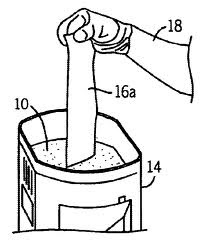
In this method, the body part to be treated is directly immersed into the container of paraffin wax for 2 – 3 seconds and taken out. After 2 – 3 seconds the part is again immersed to make another layer of paraffin wax. This process is repeated 6 – 12 times until 3 – 4 mm layer is formed, and then wrapped around by plastic sheet and towel. This method is preferably used for treating distal parts of the body.
3 Brushing method:
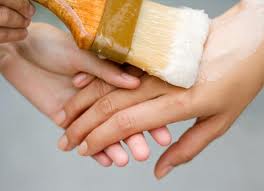
A roll of bandage is immersed in molten paraffin wax and then wrapped around the body part. This method is preferably used for treating proximal parts of the body.
A brush of various sizes is used for the application of molten wax over the body tissues. This method is used for proximal joints i.e. shoulder, elbow and knee joints
etc.
4 Pouring method:
The molten wax is directly poured by a utensil on the part to be treated and then wrapped around by a towel.
Therapeutic effects:
Arthritic conditions:
In arthritis conditions like RA, particularly for the stiff and painful joint and the distal part of the body such as hands, feet, paraffin wax is helpful before mobilization exercises. The heat produce by the paraffin wax reduces the pain and soften the joint.
Painful conditions:
Paraffin wax therapy decreases pain, soften the joint and also increases the mobility.
In painful condition affecting the joints due to trauma or disease paraffin wax is of value to decrease pain and enhancing function e.g. sprain, strain.
Stiff joints:
Paraffin wax therapy decreases pain, soften the joint and also increases the mobility.
Chronic inflammation:
In chronic inflammatory condition with oedema and stiffness affecting joints, paraffin wax is of value important to decrease oedema and increase softening of joints.
Dangers:
· Burns
· Aggravation of inflammation
side effect
Paraffin wax is tested in a lab to make sure it’s safe and hygienic to use on the body. It’s completely natural and has a low melting point, which means it can be easily applied to the skin at a temperature low enough not to cause burns or blisters.
However, if you have very sensitive skin, paraffin wax may cause heat rash. Heat rash results in small red bumps on the skin that can be itchy and uncomfortable.
You should not use paraffin wax if you have:
poor blood circulation
numbness in your hands or feet
diabetes
any rashes or open sores
If you have a chemical sensitivity, you may develop minor swelling or breakouts from the wax treatment. That’s because paraffin comes from petroleum products
Indication of Paraffin Wax Bath
paraffin for edema, vascular disorders, and especially for post-traumatic cases. I also use it for arthritis, osteoarthritis, and other articular and peri-articular diseases when followed by localized swelling and pain.
- Rheumatoid arthritis of hands and feet
- Osteoarthritis
- Post-traumatic / fracture stiffness.
- Trigger finger pain and muscle spasms.
- Pain and muscle spasms
- Oedema and inflammation
- Adhesion and scar.
- Shop Related Products
Contra-indication of Paraffin Wax Bath
Wax therapy is contraindicated in the presence of varicose abnormalities, phlebitis, and when there is a risk of releasing emboli or thrombi. I should not use paraffin in extensive or general applications where there are changes in sensation.
- Anesthetic area
- Open wound
- Unreliable patient
- Impaired thermal sensation
- Scar tissue
- Infectious area
- Circulatory dysfunction
- Analgesic drug
- Tuberculosis
- Deep x-ray therapy.
Advantage of Paraffin Wax Bath
Therapeutically paraffin wax can help relieve pain that people have in their hands. It can relieve hand issues such as osteoarthritis and rheumatoid arthritis with this therapy. This is because the wax serves as heat therapy and can help increase blood flow, relax muscles, and ease joint stiffness. It can also reduce muscle spasms and inflammation with the use of a paraffin wax bath.
It can treat two or three patients at a time.
May apply which a patient has poor heat tolerance.
Use for dry scaly skin after removal of Plaster of Paris following fracture
Wax is a self-insulating. After removal of wax, the part cools quickly.
After removal of wax, the part cools quickly.
It can be carried to the house and may be useful for chronic sufferers.
Disadvantage of Paraffin Wax Bath
We test paraffin wax in a lab to ensure that it is safe and hygienic to use on the body. It’s natural and possesses a low melting point, which implies that it can easily apply it to the skin at a low temperature not to cause burns or blisters. However, if you have sensitive skin, paraffin wax may induce a heat rash. Heat rash rises in small red bumps on the skin that will be itchy.
Painful application for the patient.
Skin irritation may occur.
Maintenance is difficult.
Sediment occurs at the bottom of the tank.
Contamination of oil by atmospheric dust may occur.
Water tends to collect at the bottom of the bath.
HEATING PAD
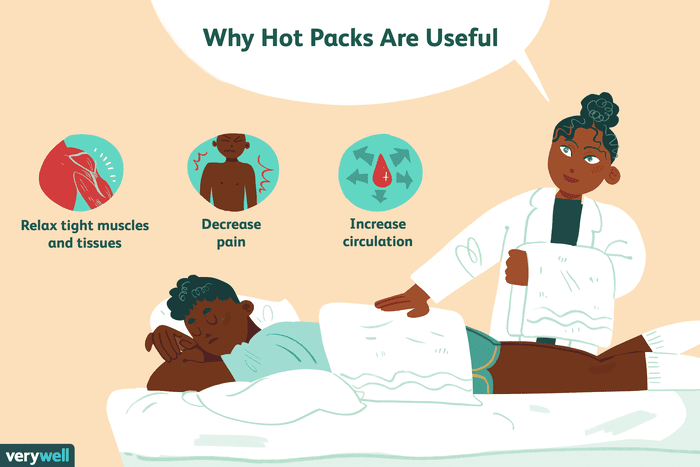
Hot packs are a type of physical modality often used in physical therapy clinics. They are applied to your injured body part by your physical therapist. Physical therapists wrap moist hot packs in several layers of towels and the hot packs are then applied directly on the exposed area that needs treatment.
Benefits of Hot Packs
The heat provided by the hot packs has several important benefits. These may include:
Relaxes tight muscles causing tissues to relax.
Decreases pain caused by muscle tension or spasms.
Causes vasodilatation of the blood vessels which increases circulation to the area.
Increased circulation to your injured body part helps to bring in nutrients, oxygen, and cells that help to promote healing. This increased circulation can also wash away metabolic waste materials that may be gathered around your injured body site.
Who Benefits From Using Hot Packs?
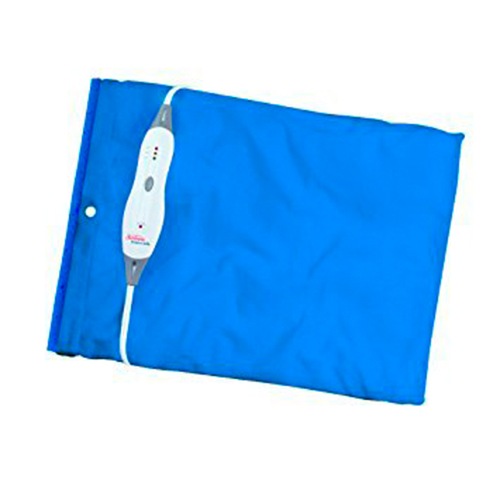
Patients with certain conditions typically benefit from using hot packs in the physical therapy clinic. These conditions may include:
- Arthritis
- Chronic pain
- Joint contracture
- Muscle spasms
- Chronic injury where increased blood flow is desired
How Is Heat Applied?
Heat is applied in specific ways:
- Your body should be positioned comfortably
- The body part to be treated with heat should be exposed
- Your PT will obtain a hot pack from a device called a hydrocollator. This is a big box containing water heated to about 160 degrees. The hot pack is filled with clay and sand, and it absorbs the hot water.
- The hot pack is wrapped in a terry cloth towel and applied to your body part to be treated.
When the heat is first applied, it may not feel hot; it takes a few minutes for the heat to penetrate the toweling. Just wait a few minutes and you’ll start feeling the heat penetrate your skin.
Who Should Avoid Using Hot Packs?
There are certain conditions where using moist heat and hot packs should be avoided. These may include:
- In areas of impaired or altered sensitivity (like having numbness or tingling)
- In people with impaired mental capacity
- Over open wounds
- After acute injury
- Over joint with acute hemarthrosis
- In persons with multiple sclerosis who are sensitive to heat
If you have an injury and are considering using heat, you should check in with your doctor to ensure that using hot packs is a safe thing for you to do. A visit to your physical therapist can help determine if you should be using heat.
How Long Should Heat Be Used?
Heat and hot packs are often applied to your body for 10 to 15 minutes. Frequent checks should be made to ensure that you are not getting too hot and to avoid skin damage. If you are getting too warm, you must remove the hot pack from your body. Using heat multiple times a day is not recommended, as it may damage your skin.
Caution
If you are going to a physical therapist, he or she may use heat to help treat your condition. Using heat on a long-term basis may not be recommended, as it may cause erythema ab igne, a condition marked by mottled and discolored skin.2 There may be some evidence that this increases the likelihood of skin cancer, but research is not 100% accurate on this claim.
Physical therapists are movement experts, and you should be engaged in an active rehab program to improve range of motion and strength to improve functional mobility. Hot packs are a passive modality where you are required to no nothing. This puts your overall health in the hands of your physical therapist and not in your control.
Be sure that if you use hot packs in the PT clinic, you are also engaged in exercise and active rehab. If your PT only uses passive treatments such as heat, ultrasound, or electrical stimulation, ask to be more involved in an active rehab program. If passive treatment continues, it may be time to find a new physical therapist.

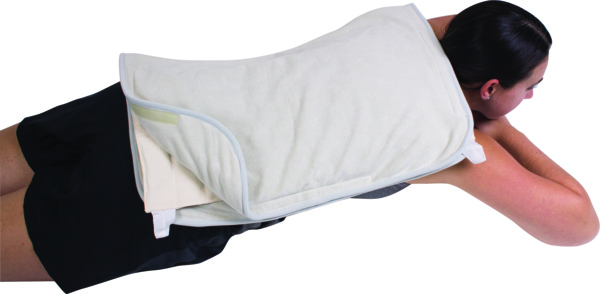
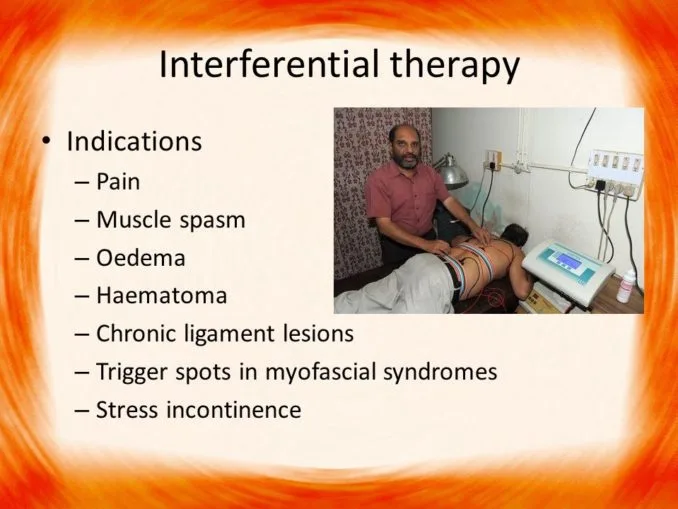
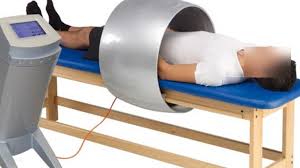
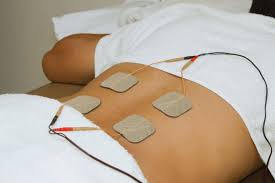
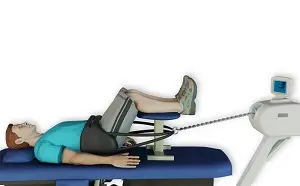
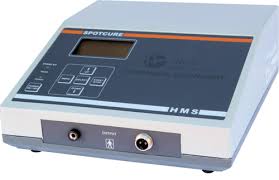

2 Comments